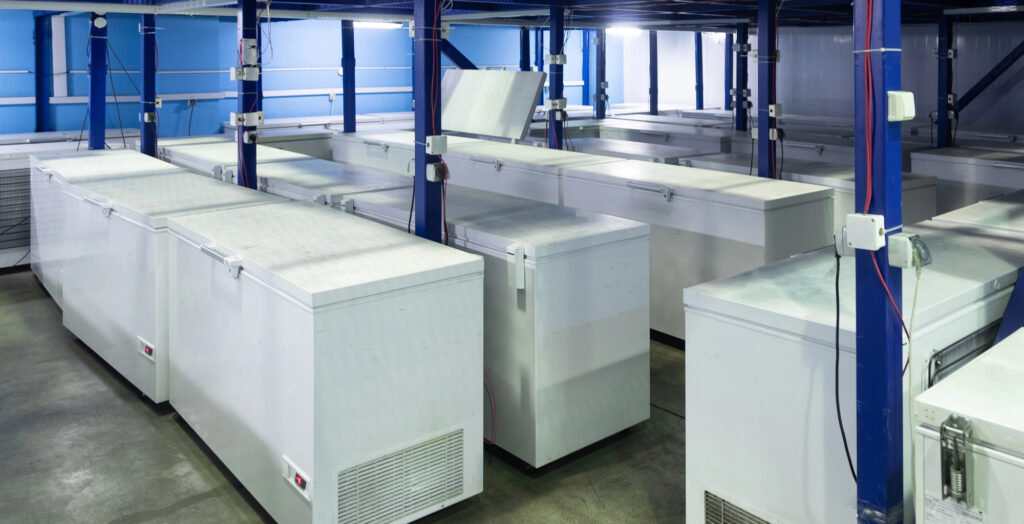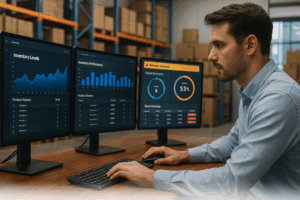The global trade of temperature-sensitive goods, such as pharmaceuticals, vaccines, perishable foods, and biologics, has seen an exponential increase in recent years. The demand for precision in temperature control throughout the entire supply chain is critical for maintaining the efficacy, safety, and quality of these goods. According to a 2022 report by Grand View Research, the global cold chain logistics market size was valued at USD 243.4 billion and is expected to grow at a CAGR of 16.5% from 2023 to 2030. This rapid growth is fueled by advancements in technology and the increasing need for robust cold chain solutions to meet the demands of industries such as pharmaceuticals and food production.
As industries continue to evolve, innovative cold chain solutions have emerged to address the unique challenges posed by these sensitive products. In this article, we explore some of the most cutting-edge cold chain technologies and strategies that are revolutionizing the transportation and storage of temperature-sensitive goods.
Smart Packaging and Monitoring
Traditional cold chain methods often rely on passive temperature-controlled containers and monitoring systems, which may not provide real-time data and control. However, advancements in smart packaging and monitoring technology have transformed the way temperature-sensitive goods are transported and tracked.
Intelligent packaging solutions equipped with sensors, RFID tags, and IoT (Internet of Things) technology enable real-time monitoring of temperature, humidity, and other critical environmental conditions. According to a 2023 report by MarketsandMarkets, the global smart packaging market size is expected to reach USD 41.6 billion by 2027, growing at a CAGR of 8.3%. These smart systems provide instant alerts to stakeholders if deviations from optimal conditions occur, allowing for immediate corrective actions. This level of transparency and control minimizes the risk of temperature excursions and ensures the integrity of the goods throughout their journey.
For example, the pharmaceutical company Pfizer used IoT-enabled temperature monitoring to ensure that their COVID-19 vaccines were transported and stored at the required ultra-low temperatures. Sensors embedded in the vaccine containers provided real-time data, allowing Pfizer to track the temperature at every step of the journey.
Blockchain for Transparency and Traceability
Blockchain technology has gained traction as a powerful tool for ensuring transparency, traceability, and data integrity in supply chains. In the context of cold chain logistics, blockchain offers an immutable and decentralized ledger that records every transaction, temperature reading, and handling event. This enables stakeholders to verify the entire history of a temperature-sensitive product, from its origin to its final destination.
In 2021, the global logistics company Maersk partnered with IBM to implement blockchain technology for the transportation of pharmaceuticals. By using a permissioned blockchain platform, Maersk and IBM ensured that all parties involved, including manufacturers, distributors, carriers, and regulators, could access a secure and tamper-proof record of the product’s journey. This not only enhanced accountability and trust but also helped prevent counterfeiting and reduced the risk of substandard or compromised products entering the market.
A 2020 study by Deloitte found that 73% of organizations in the pharmaceutical industry believe that blockchain will improve transparency and traceability in their supply chains.
Cold Chain as a Service (CCaaS)
The concept of Cold Chain as a Service (CCaaS) has emerged as a game-changing approach to temperature-sensitive logistics. CCaaS providers offer end-to-end cold chain management solutions, encompassing packaging, transportation, storage, and data analytics. This approach eliminates the need for companies to invest heavily in building and maintaining their own cold chain infrastructure.
CCaaS providers leverage advanced technologies, such as AI-driven optimization algorithms and predictive analytics, to streamline cold chain operations. By analyzing historical and real-time data, they can optimize routes, predict potential issues, and ensure that temperature-sensitive goods are handled with the utmost care. For example, companies like Lineage Logistics and VersaCold Logistics Services offer CCaaS solutions, providing businesses with tailored cold storage, transportation, and inventory management services without requiring heavy upfront investments.
This model allows businesses to focus on their core competencies while benefiting from the expertise and efficiency of specialized cold chain providers. In fact, the global cold chain as a service market size is projected to reach USD 5.5 billion by 2027, according to a report by MarketsandMarkets.
Eco-Friendly Cold Chain Solutions
As sustainability becomes a top priority for businesses across industries, eco-friendly cold chain solutions have gained prominence. Traditional refrigeration methods often rely on greenhouse gas-emitting refrigerants such as hydrofluorocarbons (HFCs), and energy-intensive processes, which contribute to global warming and environmental degradation. According to the U.S. Environmental Protection Agency (EPA), refrigeration and air conditioning systems account for approximately 10% of global greenhouse gas emissions. However, innovative approaches are now addressing these environmental concerns, helping businesses reduce their environmental footprint while improving operational efficiency.
Green Refrigerants: Low Global Warming Potential (GWP)
One of the key innovations in eco-friendly cold chain solutions is the shift toward green refrigerants—substances with low or negligible Global Warming Potential (GWP). The introduction of natural refrigerants like carbon dioxide (CO2), ammonia, and hydrocarbons has significantly reduced the environmental impact of refrigeration systems. CO2, for example, has a GWP of 1, compared to HFC-134a, which has a GWP of 1,430, making it a more environmentally sustainable option for cold chain operations.
A prominent example of this shift is the global retail giant Walmart. The company has committed to using natural refrigerants in its refrigeration systems, including CO2-based cooling technology, which has significantly reduced its carbon footprint. Walmart’s ongoing sustainability efforts are part of their broader environmental strategy, which includes a goal to reduce emissions by 18% by 2025, in alignment with the Science-Based Targets initiative (SBTi). According to Walmart’s 2020 Global Responsibility Report, their refrigeration transition has led to an 80% reduction in GWP for their refrigeration systems.
Solar-Powered Refrigeration Units
In addition to adopting green refrigerants, solar-powered refrigeration units are emerging as a sustainable alternative in the cold chain industry. Solar energy reduces the need for electricity sourced from fossil fuels, making refrigeration systems more environmentally friendly. These units use photovoltaic solar panels to generate electricity, which powers refrigeration systems, reducing reliance on grid energy and cutting overall emissions.
A notable example is the company Cool Logistics, which has developed solar-powered refrigeration containers. These containers, which are used for transporting perishable goods, rely on solar energy to power the cooling systems during transit, reducing the carbon footprint of long-distance transportation. This technology is particularly valuable for regions where access to reliable power sources is limited, as well as for reducing costs associated with energy consumption. According to Cool Logistics, their solar-powered units have helped reduce fuel consumption by as much as 50%, significantly lowering greenhouse gas emissions.
Moreover, a 2022 study published by the International Institute for Environment and Development (IIED) highlights that integrating solar energy into cold chain logistics has the potential to reduce emissions from refrigerated transportation by up to 70%. The adoption of solar-powered refrigeration is projected to grow at a rate of 15.2% annually from 2021 to 2027, according to a report by Fortune Business Insights, driven by increasing demand for sustainable logistics solutions.
Thermal Energy Storage Systems
Another promising eco-friendly innovation is the use of thermal energy storage systems in cold chain logistics. Thermal storage systems capture and store excess thermal energy during periods of low energy demand (such as during the night) and use it during peak demand periods, reducing the need for energy-intensive refrigeration during high-traffic periods. This technology is increasingly being used in combination with solar-powered refrigeration units to further reduce energy consumption.
For instance, Pharma Logistics, a logistics provider specializing in temperature-sensitive pharmaceuticals, has integrated thermal energy storage into its cold chain solutions. By combining thermal energy storage with their solar-powered refrigerated trucks, Pharma Logistics has reduced both their energy consumption and operating costs while ensuring that temperature-sensitive goods are stored and transported within required temperature ranges.
Reducing the Carbon Footprint of Cold Chain Transportation
A major driver of the eco-friendly cold chain shift is the transportation sector, which accounts for 14% of global carbon emissions, according to the International Energy Agency (IEA). In response, several cold chain companies are adopting hybrid and electric-powered refrigeration systems for transport vehicles. These systems use electricity or alternative fuels such as hydrogen to power refrigeration units, significantly reducing the use of diesel and other fossil fuels.
DHL, a global logistics provider, has invested heavily in electric delivery vehicles for urban areas. The company has committed to reducing its logistics-related emissions to zero by 2050. As part of this effort, DHL has implemented electric refrigeration units in some of their fleet to help reduce the carbon emissions associated with transporting temperature-sensitive goods.
In the U.S., electric refrigerated trucks are seeing significant adoption in the food distribution sector. Kroger, one of the largest grocery chains in the U.S., has deployed electric refrigerated trailers in several states as part of its commitment to reducing emissions by 30% by 2030. The shift to electric refrigeration has been instrumental in reducing the overall emissions from their fleet while maintaining the cold chain integrity required for perishable goods.
Conclusion
Innovative cold chain solutions are reshaping the way temperature-sensitive goods are handled, transported, and stored. With the integration of smart packaging, blockchain technology, CCaaS models, and sustainable practices, businesses can ensure the quality and safety of their products while minimizing environmental impact. As technology continues to advance, the future of cold chain logistics holds even more promise, offering greater efficiency, transparency, and sustainability for industries worldwide.
At Perfect Planner, we are committed to helping businesses optimize their supply chain management. If you have any questions about innovative cold chain solutions for temperature-sensitive goods, or if you’d like to connect with us, please reach out to us through our contact details below.
Author: Ed Danielov
Publication Date: February 5, 2025
© Copyright 2025 Perfect Planner LLC. All rights reserved.
References
- U.S. Environmental Protection Agency (EPA). (2021). Refrigeration and air conditioning systems: Greenhouse gas emissions. Retrieved from https://www.epa.gov/
- Walmart. (2020). Global Responsibility Report 2020. Retrieved from https://corporate.walmart.com/
- International Institute for Environment and Development (IIED). (2022). Reducing emissions in cold chain logistics through solar and thermal storage. Retrieved from https://www.iied.org/
- Fortune Business Insights. (2021). Solar-powered refrigeration market size, share & industry analysis report, 2021 – 2027. Retrieved from https://www.fortunebusinessinsights.com/
- DHL Group. (2020). Sustainability report: Moving toward zero emissions by 2050. Retrieved from https://www.dhl.com/
- Kroger. (2021). Kroger’s 2021 Sustainability Report. Retrieved from https://www.thekrogerco.com/
- Cool Logistics. (2021). Solar-powered refrigerated containers for sustainable cold chain logistics. Retrieved from https://www.coollogistics.org/






